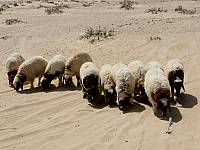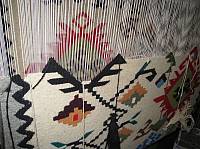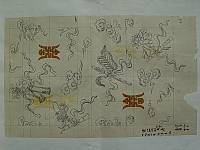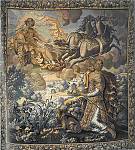
Al Sadu, traditional weaving skills in the United Arab Emirates
inscribed,Al Sadu, traditional weaving skills in the United Arab Emirates Al Sadu is a traditional form of weaving practised by Bedouin women in rural communities of the United Arab Emirates to produce soft furnishings and decorative accessories for camels and horses. Bedouin men shear the sheep, camels and goats, and the wool is cleaned and prepar... United Arab Emirates
he Intangible Cultural Heritage of Humanity, described as follows: Yuki-tsumugi is a Japanese silk-weaving technique found principally in Yuki City and Oyama City, along the Kinu River, north of Tokyo. The region boasts a warm climate and fertile lands, which are ideal for the growth of mulberry trees and sericulture. The Yuki-tsumugi technique is...19 November 2010
Nairobi
Ornek, a Crimean Tatar ornament and knowledge about it
e about it Örnek is a Ukrainian system of symbols and their meanings, currently used in embroidery, weaving, pottery, engraving, jewellery, wood carving, and glass and wall painting. The symbols are arranged to create a narrative composition. The Crimean Tatar communities understand the meaning of the symbols and often commission artisans to creat... Ukraine
d Arab Emirates for submitting, on time, its report on the status of the element ‘Al Sadu, traditional weaving skills in the United Arab Emirates’, inscribed in 2011 on the List of Intangible Cultural Heritage in Need of Urgent Safeguarding; Takes note of the efforts undertaken by the State Party to safeguard the element, especially by streng...19 December 2020
Paris
The tradition of carpet-making in Chiprovtsi
ades. The finished carpets are renowned for their composition, ornamental motifs and colour. Carpet weaving goes hand in hand with beliefs, verbal formulae and ritual practices. The weavers say prayers and make wishes for success before starting a new carpet, and sing and tell stories while working at the loom. The process of transmission occurs in... Bulgaria
Craftsmanship of Nanjing Yunjin brocade
,Craftsmanship of Nanjing Yunjin brocade In the Chinese tradition of weaving Nanjing Yunjin brocade, two craftspeople operate the upper and lower parts of a large, complicated loom to produce textiles incorporating fine materials such as silk, gold and peacock feather yarn. The technique was once used to produce royal garments such as the dragon ro... China
he United Arab Emirates for submitting its report on the status of the element ‘Al Sadu, traditional weaving skills in the United Arab Emirates’, inscribed in 2011 on the List of Intangible Cultural Heritage in Need of Urgent Safeguarding; Takes note of the continued efforts undertaken by the United Arab Emirates to safeguard the element and, i...2 December 2016
Addis Ababa
,Aubusson tapestry A centuries-old tradition, the craft of Aubusson tapestry consists of weaving an image using processes practised in Aubusson and a number of other localities in the Creuse region of France. This craft produces mainly large decorative wall hangings but also rugs and pieces of furniture. Aubusson tapestry can be based on an image i... France
hades. The finished carpets are renowned for their composition, ornamental motifs and colour. Carpet weaving goes hand in hand with beliefs, verbal formulae and ritual practices. The weavers say prayers and make wishes for success before starting a new carpet, and sing and tell stories while working at the loom. The process of transmission occurs i...28 November 2014
Paris
ommittee, Takes note that China has nominated Traditional Li textile techniques: spinning, dyeing, weaving and embroidering for inscription on the List of Intangible Cultural Heritage in Need of Urgent Safeguarding, described as follows: The traditional Li textile techniques of spinning, dyeing, weaving and embroidering are employed by women of t...2 October 2009
Abu Dhabi








